Tomatoes and foot candles
This week: P P P P Pick a Persimmon; Making sense of numbers; Tomatoes and foot candles: Haircut time; Pouring oil on troubled wood;
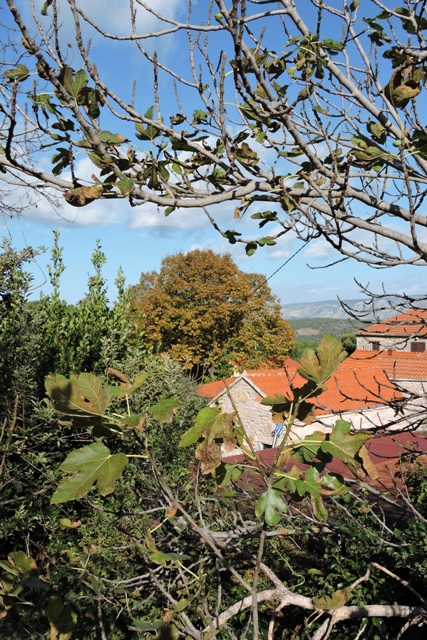
I have felt totally conflicted this week!
The weather is still warm, much warmer than the long term average. We are 5ºC above the average and in direct sunshine it feels hot.
The sea is also still warm – 23ºC on Thursday when I was last swimming – and this is where the confliction lies….
On the one hand I have all the autumn jobs to do in the orchards, but it is also nice to get the foilboard out and go and “play”.
The sea is cooling slowly, but soon a cold air and sea temperature will mean wearing a wetsuit to be comfortable doing water sports. After all it is November on Wednesday.
So I felt really guilty going down to the beach twice this week, when I could have been beavering away in the orchards.
Looking at the weather forecast, the fine and warm weather continues next week, so no doubt I will continue to have pangs of conscience over whether to “work” or “play”….
P P P P Pick a Persimmon
The persimmons are ripening and are starting to be eaten. From the toothmarks, probably by our Puh, the edible dormice.
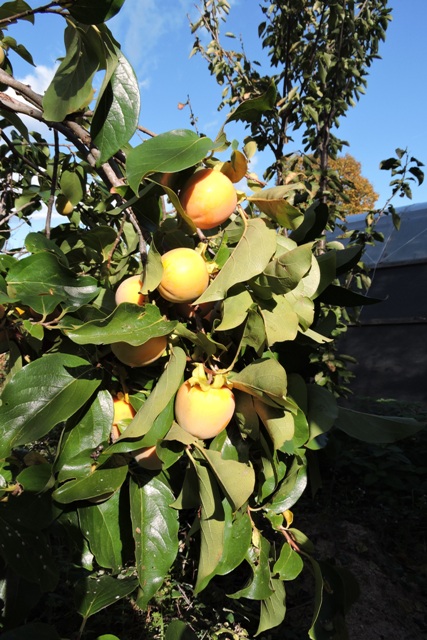
As soon as they begin to turn a golden yellow, I am carefully cutting the stems of the fruit and putting them with the bananas in my utility room to ripen.
They soon turn a “salmon pink” colour and go soft. That is the point they are ready for eating.
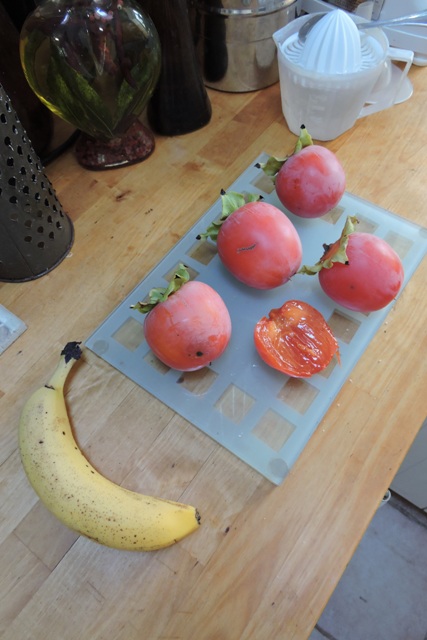
I have shared some bags of fruit with neighbours, eaten a number fresh as dessert fruit and also preserved some for later in the winter.
Preserving Persimmons is not difficult and there are several choices of methods.
I have used Kilner glass jars for the fruit after gently poaching them in a light sugar syrup. They should last well into next year.
The good news is that the fruit on the branch which broke in the strong wind a few weeks back are all slowly ripening, so I will not loose any.
Making sense of numbers
It has taken me quite some time this week to finish my spreadsheet for the polytunnel. Actually much longer than I anticipated.
Anything with a computer chip in it works with zeros and ones, the sort of thing you will have seen on the 1999 film, The Matrix. There is a new sequel, The Matrix Resurrections…
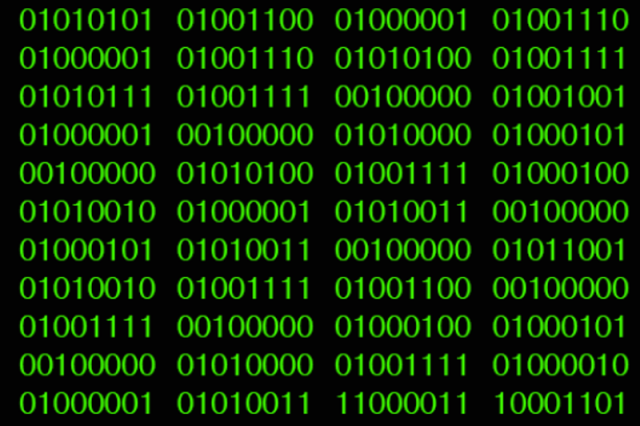
I was in the first year at school to study computer science, and I didn’t really understand Binary code. To be truthful, I still don’t.
I can “code” and have coded using various languages, for example C++, but Binary to me seems like just a lot of random numbers.
Staring at a page of data from my weather station is similarly just a series of numbers. However I am sure that buried in amongst all the data, there is useful information.
I just need to find it!
Humans are visual mammals and our eyes and brains have developed to pick out patterns and shapes. So I needed the spreadsheet to produce some graphs for me.
The data input sheet consists of 297 rows and 107 columns. not every cell has data in it, and there are A LOT of formulae to calculate and move data around.
I started to see some unusual things in the patterns of numbers, and when I checked, I discovered I had mistyped a formulae in a couple of places. These unusual patterns acted as “Check-sums”, to identify and help correct inconsistencies.
Then I created the first charts using Microsoft Excel. There were some unusual patters here too, which identified a couple more inconsistent formulae. However one peak in May I couldn’t resolve.

Going back to the source data, I found that it was absolutely correct. Over a ten day period we had more than 180 mm of rain, that is 180 litres per square metre.
The roof area of the Polytunnel covers 36m² and it all drains inside. So that is 6,480 litres of rain.
This unusually large volume caused the humidity to rise in the polytunnel and to remain high for more than a week, creating the out of character peak.
This is the first year of data collection, so all I have is a baseline.
Air temperature, soil temperature and humidity all interact and affect plant growth. At the moment all I can say is that I can see the point when I removed the plastic sheeting, (week 12) and now have an ideas when I need to put it back for the winter.
Beyond that, the charts are interesting, but at the moment I am unsure what they are telling me!
With more time and more data I should be able to start making informed decisions about what to plant and when.

Tomatoes and foot candles
Have you any “Foot Candles” lurking unused at the back of a cupboard at home?
At this point an image may come to mind of something resembling a large tea light. If it does, sadly that is not what I am talking about…
As the nights draw in, I have been reading more scientific papers about Tomatoes. There seems to be a whole industry devoted to the scientific research of the humble tomato.
Fore example: The Interactive Effects of Daytime High Temperature and Humidity on Growth and Endogenous Hormone Concentration of Tomato Seedlings. Try saying that title after a glass or two of Rakija!
Good growth and excellent yields depend on photosynthesis. Photosynthesis is the process where plants use sunlight, water, and carbon dioxide to create oxygen and energy in the form of sugar, to fuel growth and development.
Ideal 11 day average temperatures for Tomato Cultivation:
Day time – 21-27°C (70-82°F)
Night time – 16-18°C (62-64°F)
Seed germination – 18-29°C (65-85°F)
Ideal Relative Humidity Tomato Cultivation:
Day time – 60-85% RH
Night time – 65-75% RH
Pollination – 70% RH
VPD – 0.5-1.2 kPa
Sunlight is the primary factor driving photosynthesis and for horticulture, the measurement which is used is the “Foot Candle“. To produce and ripen fruit, tomato plants would prefer 16 hours of light per day, with a minimum of 650 foot candles as measured at the leaf surface.
The full moon, at its peak and with unimpeded brightness is less than 1 FC. So brightness is equally as important as the length of day.
My weather station today was measuring 4.5W/cm². Converting that it is 28,553FC. All this means that there is still sufficient light, heat and humidity for my winter tomatoes to grow and fruit.
Because the polytunnel is new, I have nothing else to compare it with, so this year’s data is just a baseline. However, this is what the temperatures inside look like.

In time, I think the data I am gathering will prove useful. At least I hope it weill.
Haircut time
Despite my earlier comments about spending TWO afternoons at the beach, I have actually been doing some work as well.
The traditional time to prune grapes is in February. However because the vine I have which runs around my courtyard covers some windows and openings – great in summer to provide shade and reduce temperatures – as the days shorten and the sun drops lower in the sky, I cut it back early.
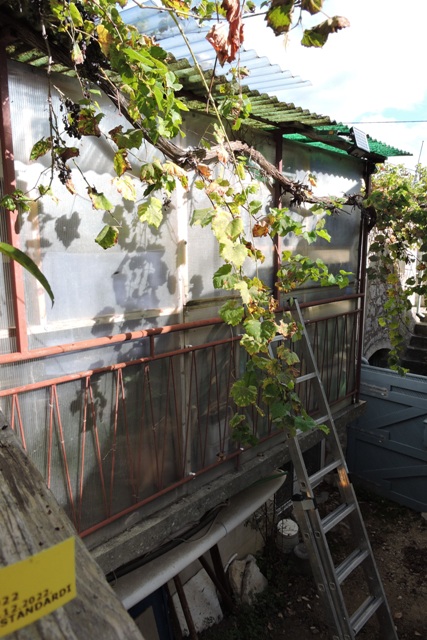
This is a very old vine which runs around the courtyard at gutter level. This means a ladder is required to do the pruning.
While I was cutting back, I could see that next year’s buds were already visible and some were even producing tiny leaves.
This is yet another example of nature being fooled by climate breakdown.
The window of my study is usually well covered.

One vine tendril had entwined itself through the shutter, so I could neither open nor close it. All the clippings have gone on the pile to be shredded for mulch.
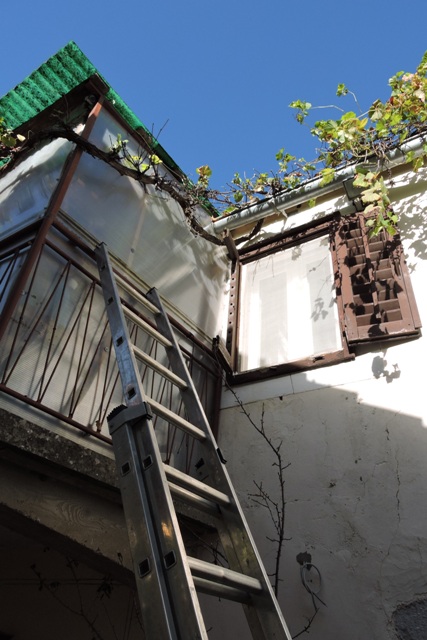
The mesh screens are still in place across all the windows and doors though, because the mosquitoes are still biting like mad. It needs cold weather to kill them off amd we just have not had any.
Elsewhere in the orchard, another plant which is in flower six weeks early is the Loquat, known locally as the Nispero.
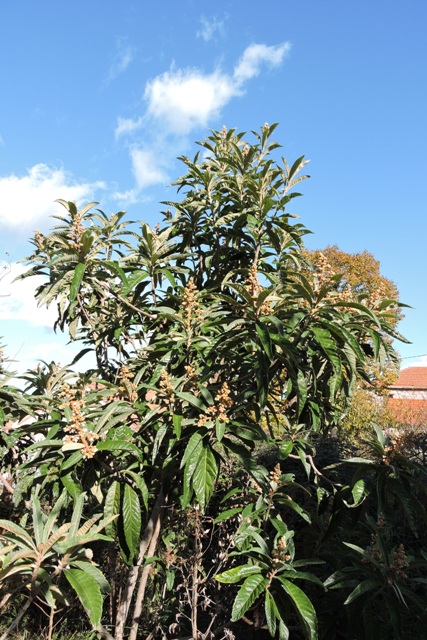
Usually there are flowers around Christmas, which provide food for bees on warm sunny days. Early flowering will deprive the bees of a much needed winter food source.
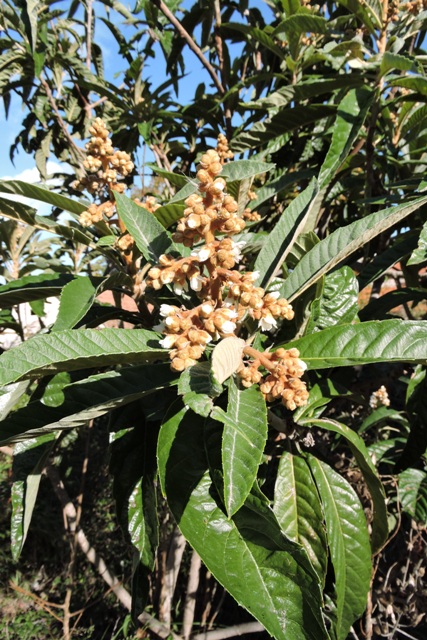
Growing up in Northern Europe, my expectation is that the appearance of bulbs heralds the arrival of spring.
When I first moved to Dol, I was surprised that Narcissi were in flower around Christmas and New Year. They feature as the first indicator species on my Springwatch calendar.
This week, I see that the first flower buds on one group of Narcissi are already showing. They just get earlier and earlier!

At the same time the autumn flowering Button Chrysanthemum are at their best at the moment too.
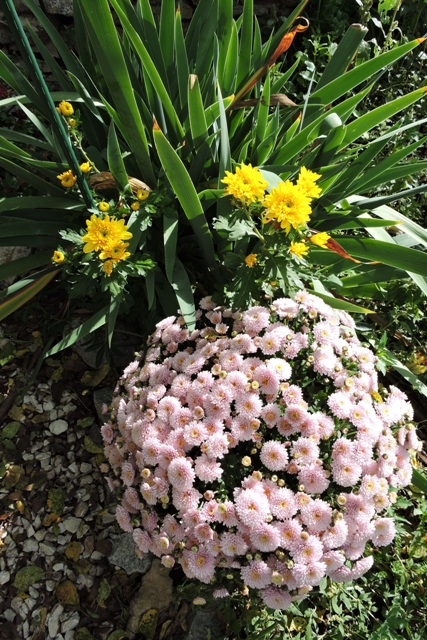
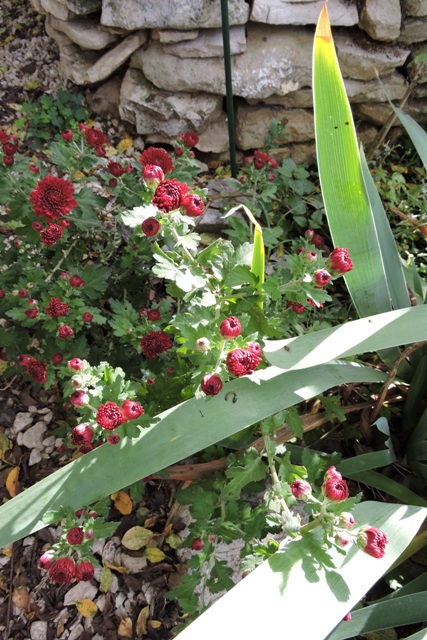
There is still plenty of insect life about too. I rescued this adult male Preying Mantis from Yoda and released it in the Polytunnel.
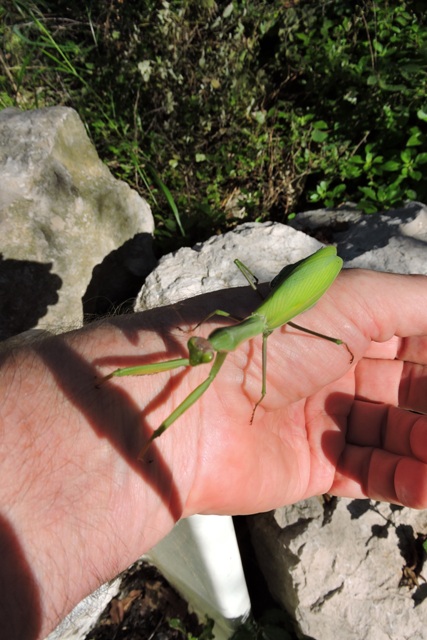
Mantis only survive the winter mild areas. Perhaps in the protected Polytunnel enclosure he may live until next year.
Pouring oil on troubled wood
With a lot of citrus to juice, I brought out my big Greenpower juicer.
This is a commercial grade kitchen machine which will turn pretty much any fruit in the garden into juice, using a cold press method.
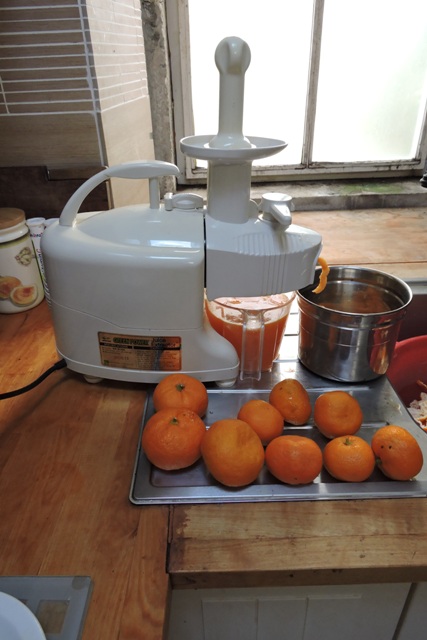
I picked all the ripe Mandarin from one of my bushes and very quickly had five litres of juice ready to be frozen.
While I had a clear work area, I also saw that the wooden windowsill behind the sink was starting to show the effects of being bathed in strong summer sunshine.
So with a clear workspace, I sanded the worktop down with 150 then 220 grade sandpaper.
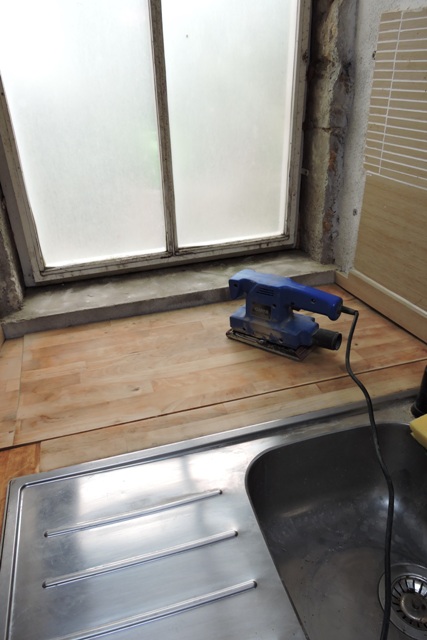
After the sanding I poured on liberal quantities of IKEA Skydd worktop oil to seal the surface again.

It took three coats to properly seal the wood. Bright Mediterranean sun wreaks havoc on everything it touches.
The clocks change early tomorrow across Europe and many other countries. In the northern hemisphere they go back an hour, so we have an extra hour in bed. But it always seems like the start of winter.
I look forward to the next change at the end of March next year.
Not only that, but tonight (Saturday) is the Hunter Full Moon AND a partial Lunar Eclipse too. I will be trying to take a photo a little later… NCG
.